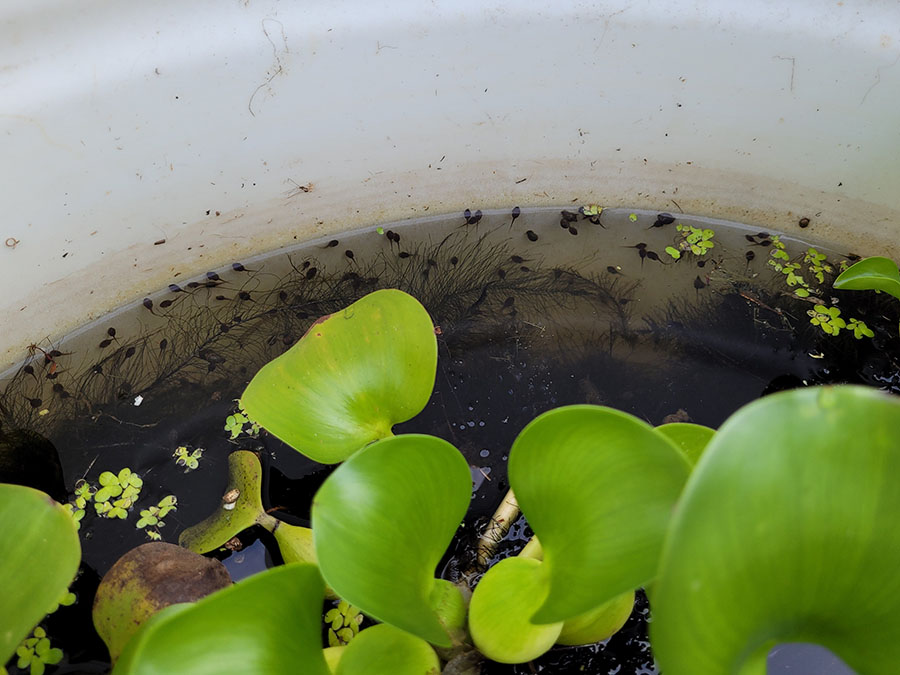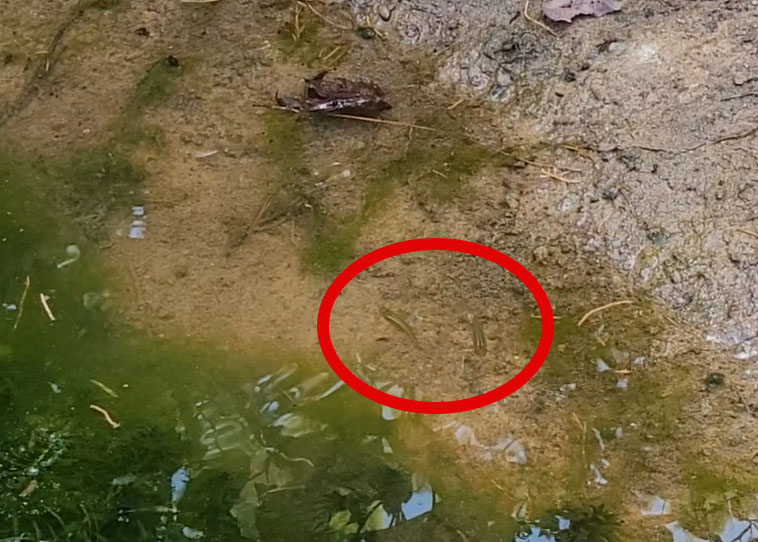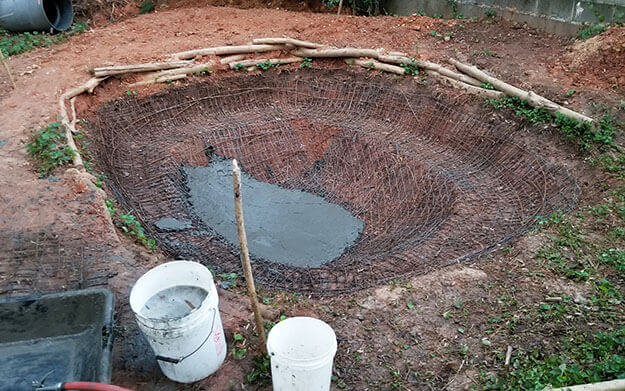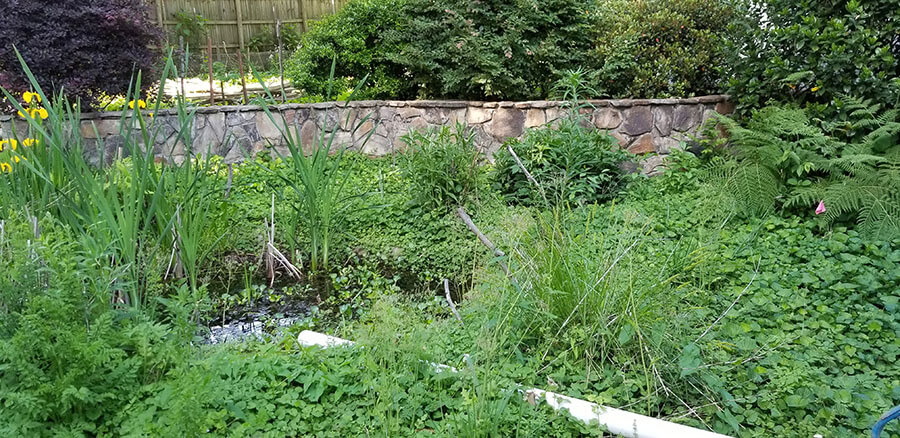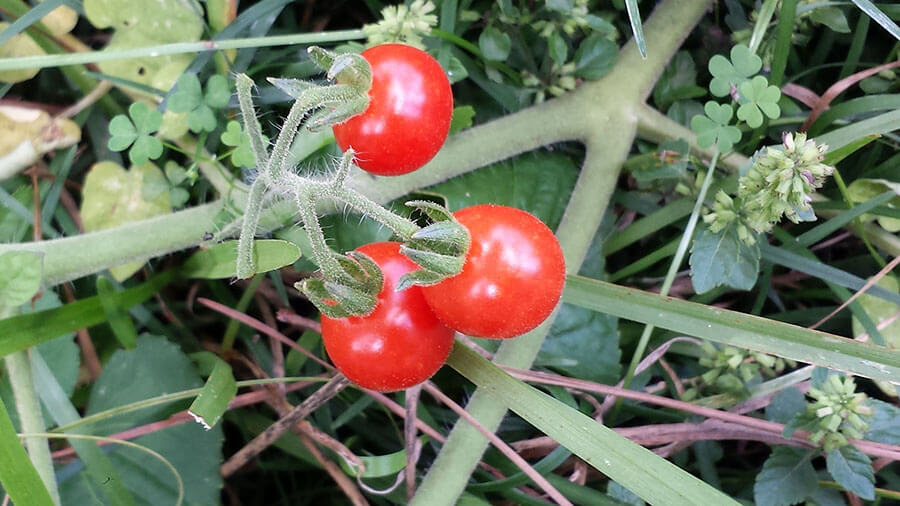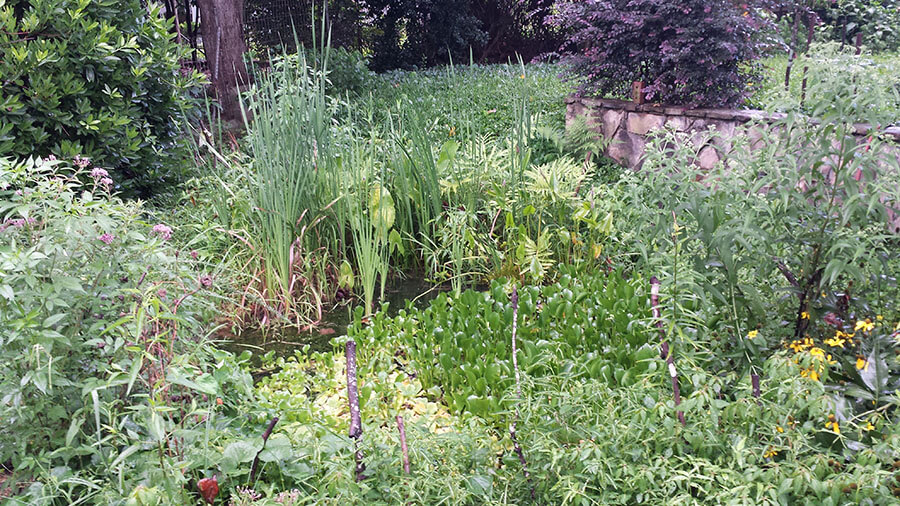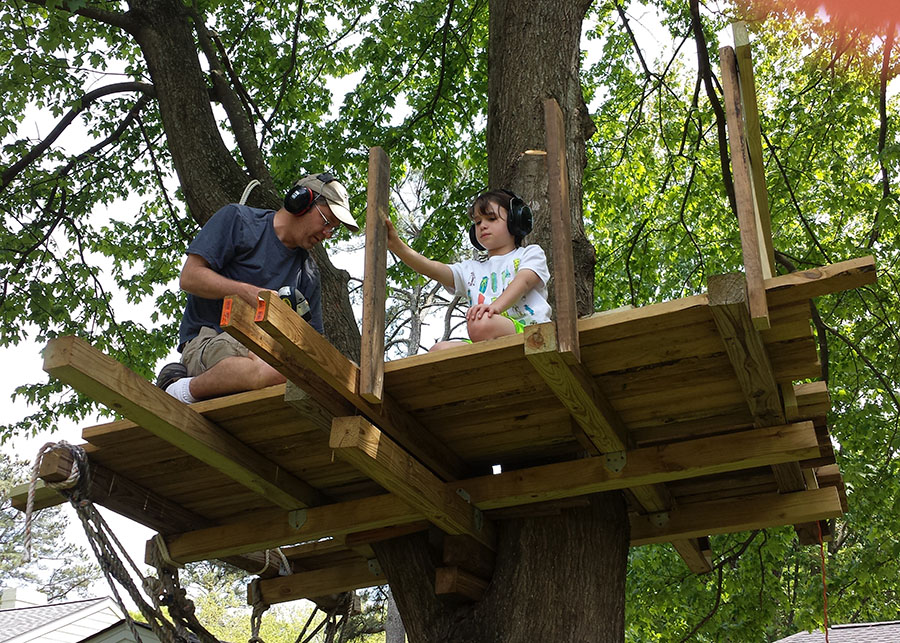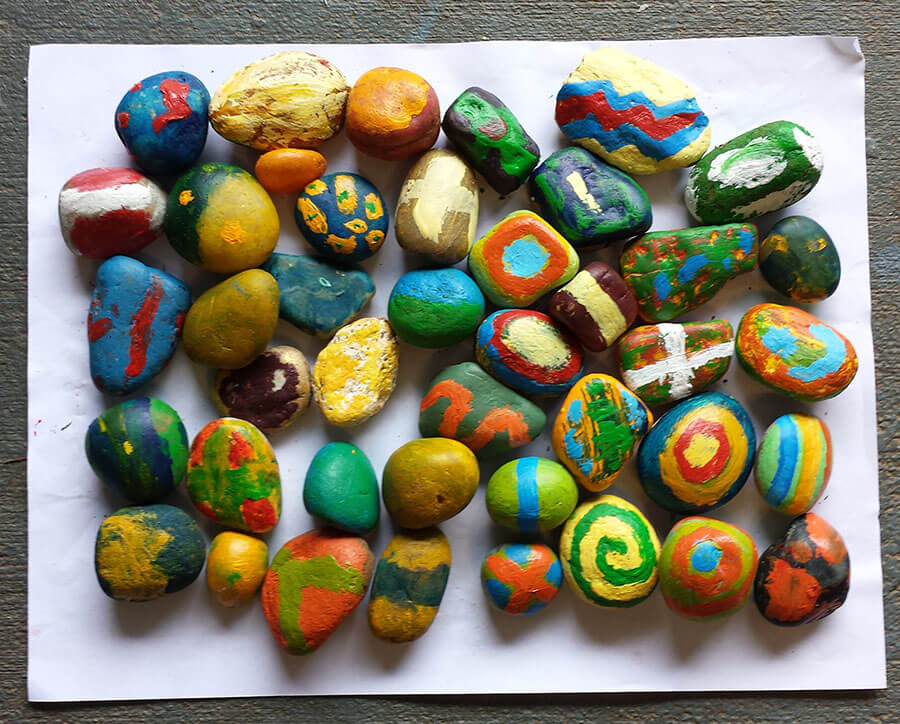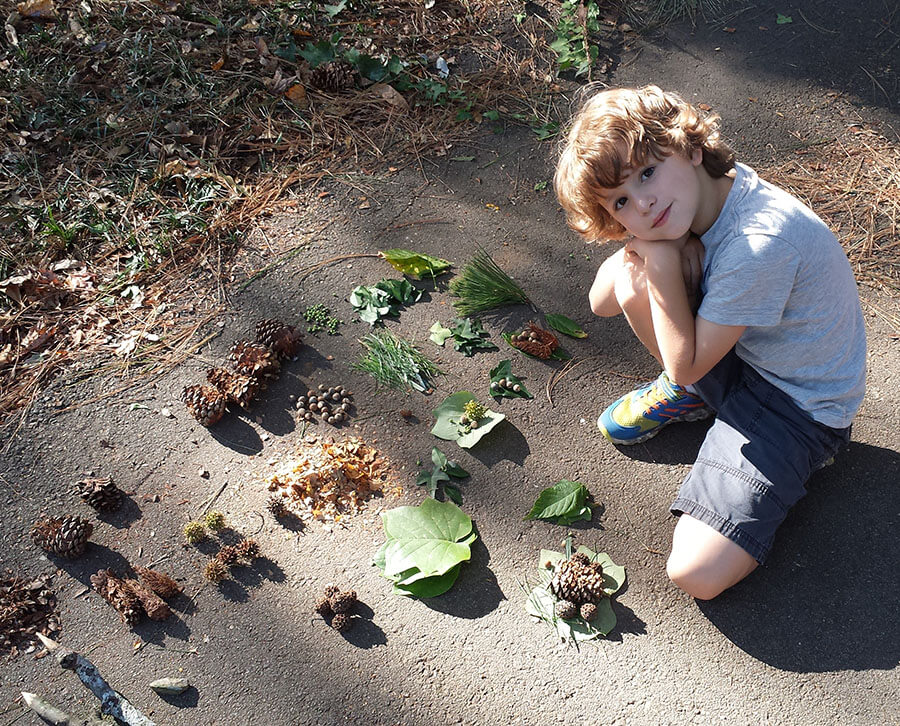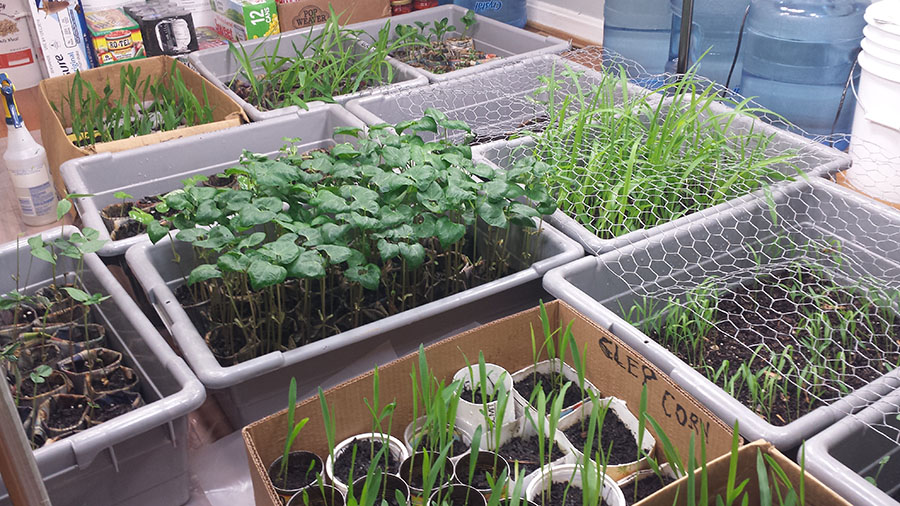The tadpoles shown here are Green Frogs (Lithobates clamitans) in tank 6. As of tonight, all eight experiment tanks have many tadpoles and eggs, with the past week seeing many clutches of eggs being laid by Cope’s Gray Tree Frogs (Hyla chrysoscelis).
Mosquitofish Ponds
The ponds at Yalobusha farms produce many tadpoles, especially Green Frogs (Lithobates clamitans) and Cope’s Gray Tree Frogs (Hyla chrysoscelis) and the Eastern Narrow-mouthed Toad (Gastrophryne carolinensis). The ponds are also host to many larvae of the blue dasher dragonflies (Pachydiplax longipennis), which swarm over the katniss and chase each other around the ponds. BUT,… Continue reading Mosquitofish Ponds
Digging the Second Pond
In 2020, I dealt with the stress of running my business during the pandemic by digging a second tadpole pond. Why a Second Pond? For the first ten years I owned the property, my back yard was an ordinary lawn of St. Augustine with fairly low ecological value. The first pond was small, but it… Continue reading Digging the Second Pond
Tree Frogs Mating On Warm May Night 2019
Down below is some audio of tree frogs singing intensely at Yalobusha Farms in Decatur, Georgia on a warm May night in 2019. The picture above is from the daytime a few days ago, and it shows the irises blooming at the far left and all the vegetation surging back. The tadpole pond at is… Continue reading Tree Frogs Mating On Warm May Night 2019
The First Harvest 2018
Going into this, I explained to my son that we had several challenges and unknowns and that the goal for the first year might be merely to raise enough seed for next year, preferably enough seed that we could sow it in a thick tangle with enough left over in case a late freeze killed… Continue reading The First Harvest 2018
The Pond in High Summer
The pond’s first summer was 2018, just a few months after it was dug, but the sprigs of plants we put in it grew explosively, and the frogs and insects colonized it immediately. It was surreal how quickly the pond established itself because I didn’t use fertilizers or tend the plants or do anything that… Continue reading The Pond in High Summer
Building the Tree House
I put off building a tree house for my son because I didn’t want to damage the beautiful maple tree in the backyard by hammering nails. (Nails in trees are an entry point for fungi and other diseases.) Then it occurred to me that I could support the framing for the deck in the Y… Continue reading Building the Tree House
Painting Rocks
I spend afternoons with my son, and now that the summer heat is here in full force, it makes doing things outdoors during our time less than ideal. Fortunately, I remembered that I had a box of studio-grade acrylic paints that I had saved from years ago, and I knew that my son liked finding… Continue reading Painting Rocks
Acorn Adventures
I wanted to teach my son about oak trees because I grew up learning about the outdoors constantly from my father and great uncles, who always pointed out different trees, plants, insects, animals, what animals ate, where things grew, if it migrated, was it native, etc. It was easy for me to take all that… Continue reading Acorn Adventures
Planting the Three Sisters
My son had to teach a lesson in third grade, some activity he was good at, and when I heard him propose something about video games, I immediately suggested planting the three sisters and pushed the idea hard. I didn’t give my son time to suggest other ideas and come up with his own, which… Continue reading Planting the Three Sisters
